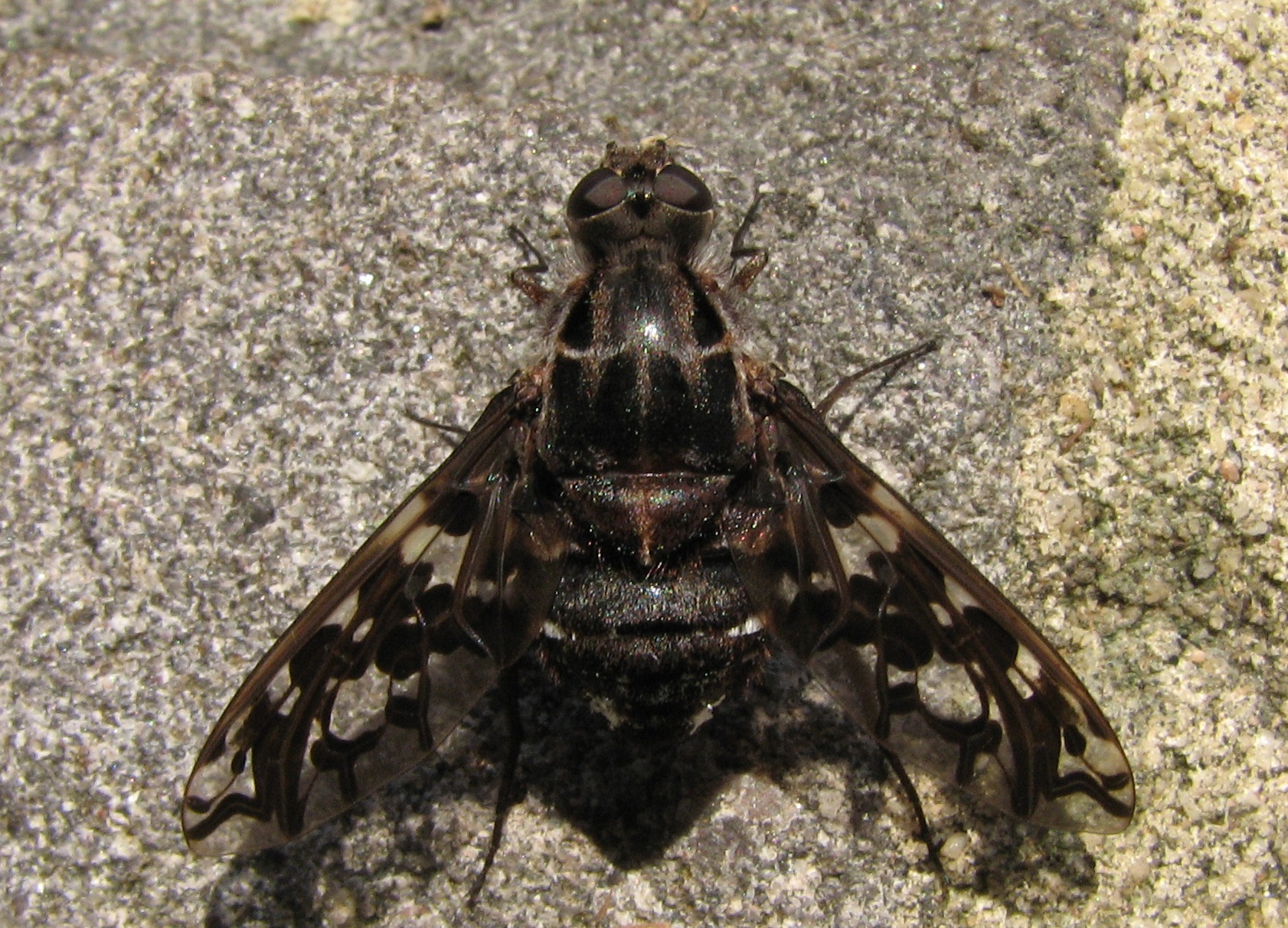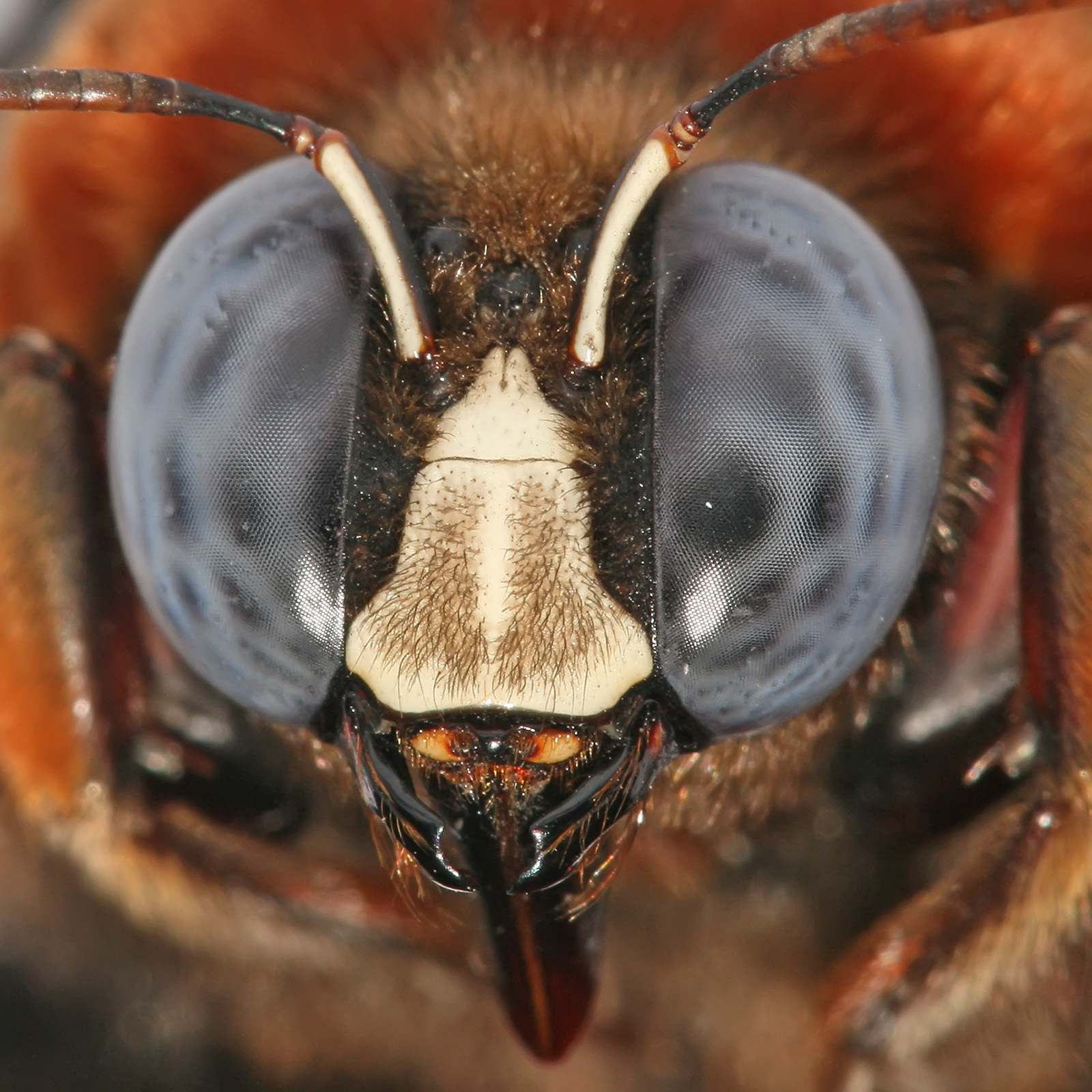|
Xenox
''Xenox'' is a genus of bee flies in the family Bombyliidae. There are five described species in ''Xenox'', all of which parasitize bees in the genus ''Xylocopa Carpenter bees are species in the genus ''Xylocopa'' of the subfamily Xylocopinae. The genus includes some 500 bees in 31 subgenera. The common name "carpenter bee" derives from their nesting behavior; nearly all species burrow into hard plant m ...'' as larvae. Species * '' Xenox delila'' (Loew, 1869) * '' Xenox habrosus'' (Marston, 1970) * '' Xenox nigrita'' (Fabricius, 1775) * '' Xenox tigrinus'' (De Geer, 1776) (tiger bee fly) * '' Xenox xylocopae'' (Marston, 1970) References Further reading * External links * Bombyliidae genera Articles created by Qbugbot {{Bombyliidae-stub ... [...More Info...] [...Related Items...] OR: [Wikipedia] [Google] [Baidu] |
Xenox Nigrita
''Xenox nigritus'', also known as ''Xenox nigrita'', is a species of bee fly in the genus ''Xenox''. Distribution ''Xenox nigritus'' is native to The Americas, where it is found in Mexico, El Salvador, Costa Rica, and Colombia Colombia, officially the Republic of Colombia, is a country primarily located in South America with Insular region of Colombia, insular regions in North America. The Colombian mainland is bordered by the Caribbean Sea to the north, Venezuel .... References Bombyliidae Insects described in 1775 {{Bombyliidae-stub ... [...More Info...] [...Related Items...] OR: [Wikipedia] [Google] [Baidu] |
Xenox Habrosus
''Xenox habrosus'' is a species of bee fly in the family Bombyliidae. It is found in Mexico, California, and Arizona Arizona is a U.S. state, state in the Southwestern United States, Southwestern region of the United States, sharing the Four Corners region of the western United States with Colorado, New Mexico, and Utah. It also borders Nevada to the nort .... References Bombyliidae Articles created by Qbugbot Insects described in 1970 {{Bombyliidae-stub ... [...More Info...] [...Related Items...] OR: [Wikipedia] [Google] [Baidu] |
Xenox Xylocopae
''Xenox xylocopae'' is a species of bee fly in the family Bombyliidae. It is found in Mexico, Arizona, Texas, and New Mexico New Mexico is a state in the Southwestern United States, Southwestern region of the United States. It is one of the Mountain States of the southern Rocky Mountains, sharing the Four Corners region with Utah, Colorado, and Arizona. It also .... References Bombyliidae Articles created by Qbugbot Insects described in 1970 {{Bombyliidae-stub ... [...More Info...] [...Related Items...] OR: [Wikipedia] [Google] [Baidu] |
Xenox Tigrinus
The tiger bee fly, ''Xenox tigrinus'', is an insect of the family Bombyliidae (bee flies) found in the eastern United States and southern Ontario. It formerly went by the name ''Anthrax tigrinus''. The distinctive wing pattern may resemble tiger stripes, giving the tiger bee fly its name. Like other members of the bee fly family, the tiger bee fly parasitizes the larvae of other insects. Identification Adults range from in length, excluding wings and other appendages including antennae and legs. Their black body has two white spots on the abdomen and their transparent wings have a distinctive black pattern. The tiger bee fly may be mistaken for a large bee due to its coloration and size. Their bee mimicry (an example of Batesian mimicry) helps them avoid potential predators. Life cycle Female tiger bee flies deposit fertilized eggs in carpenter bee Carpenter bees are species in the genus ''Xylocopa'' of the subfamily Xylocopinae. The genus includes some 500 bees in 31 s ... [...More Info...] [...Related Items...] OR: [Wikipedia] [Google] [Baidu] |
Bombyliidae
The Bombyliidae are a family of flies, commonly known as bee flies. Some are colloquially known as bomber flies. Adults generally feed on nectar and pollen, some being important pollinators. Larvae are mostly parasitoids of other insects. Overview The Bombyliidae are a large family of flies comprising hundreds of genera, but the life cycles of most species are poorly known, or not at all. Their size varies between species ranging from 2 mm long to a 40 mm wingspan making them some of the largest flies. When at rest, many species hold their wings at a characteristic "swept back" angle. Adults generally feed on nectar and pollen, some being important pollinators, often with spectacularly long proboscises adapted to plants such as '' Lapeirousia'' species with very long, narrow floral tubes. Unlike butterflies, bee flies hold their proboscis straight, and cannot retract it. Many Bombyliidae superficially resemble bees and accordingly the prevalent common name for a member of the ... [...More Info...] [...Related Items...] OR: [Wikipedia] [Google] [Baidu] |
Xylocopa
Carpenter bees are species in the genus ''Xylocopa'' of the subfamily Xylocopinae. The genus includes some 500 bees in 31 subgenera. The common name "carpenter bee" derives from their nesting behavior; nearly all species burrow into hard plant material such as dead wood or bamboo. The main exceptions are species in the subgenus '' Proxylocopa'', which dig nesting tunnels in suitable soil. Characteristics Many species in this enormous genus are difficult to tell apart; most species are all black, or primarily black with some yellow or white pubescence. Some differ only in subtle morphological features, such as details of the male genitalia. Males of some species differ confusingly from the females, being covered in greenish-yellow fur. The confusion of species arises particularly in the common names; in India, for example, the common name for any all-black species of ''Xylocopa'' is ''bhanvra'' (or ''bhomora'' - ভোমোৰা - in Assamese), and reports and sightings of ' ... [...More Info...] [...Related Items...] OR: [Wikipedia] [Google] [Baidu] |


